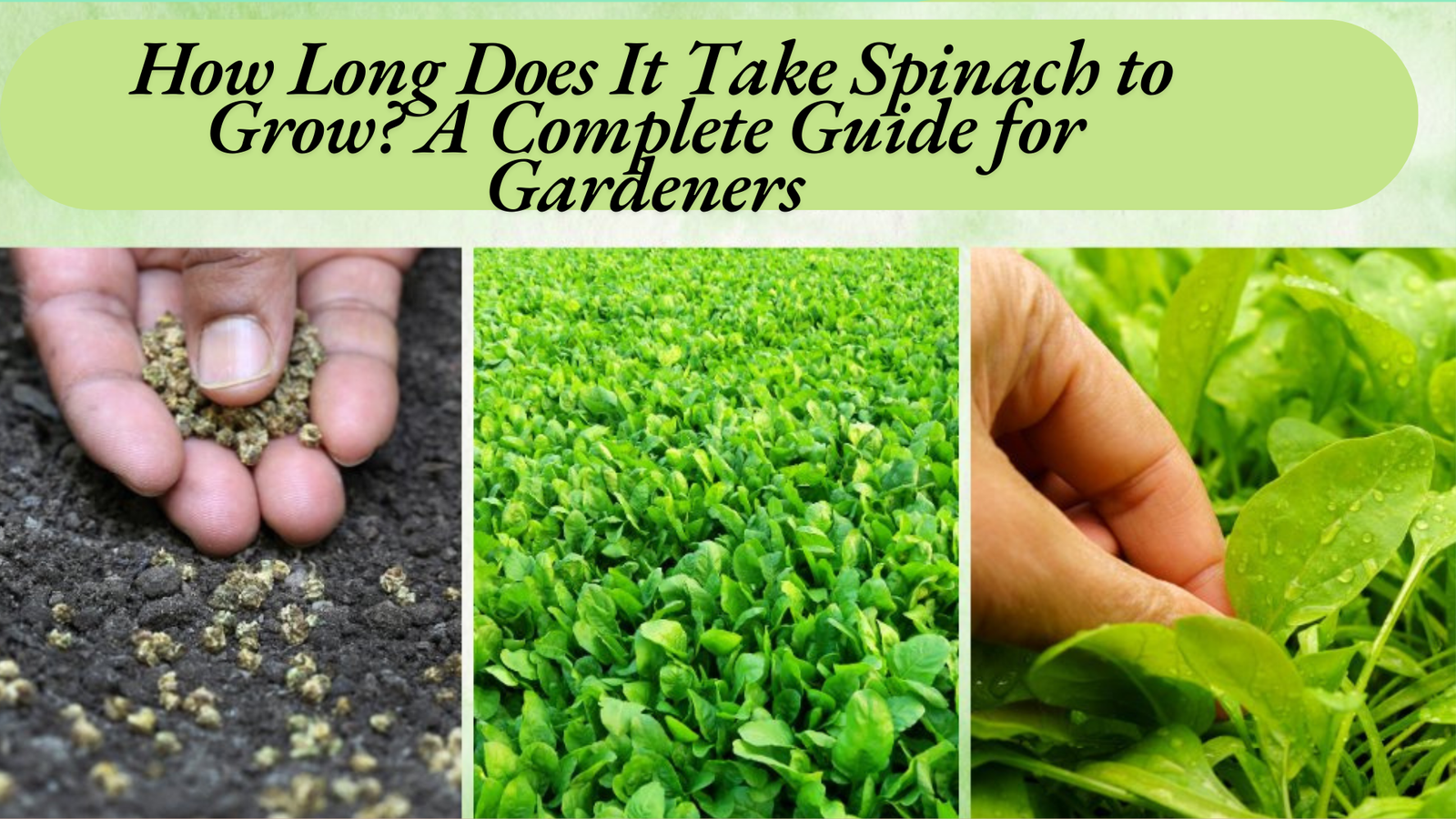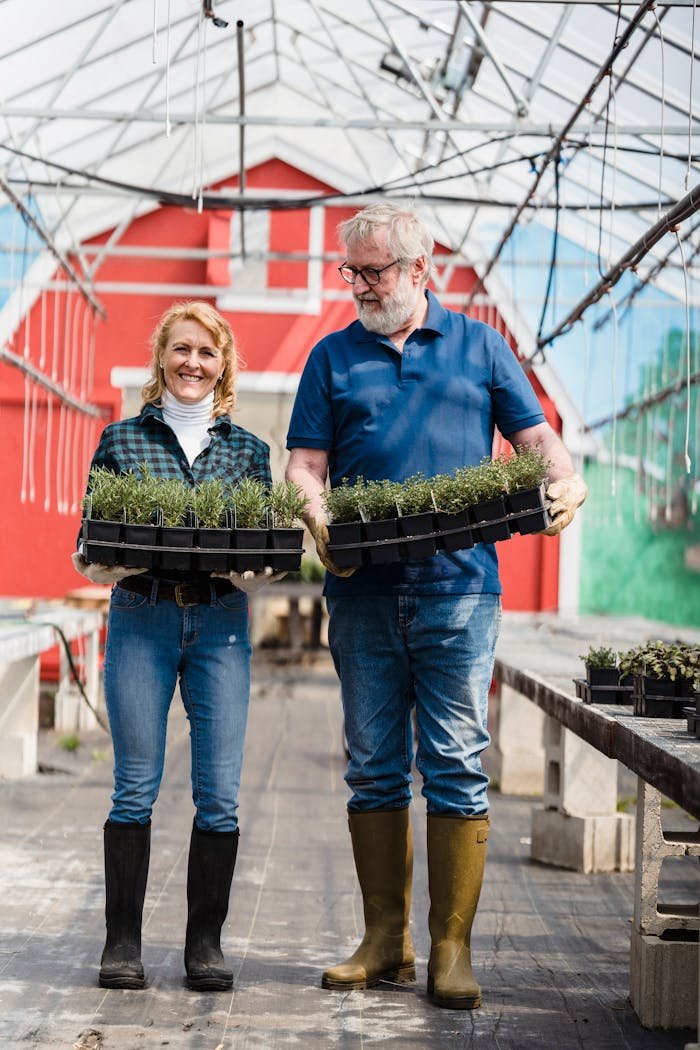Spinach is a green vegetable that is rich in nutrients and has many benefits. You can easily grow it in gardens, in containers, in small pots, and in open spaces. All of them grow rapidly. Many farmers like to grow spinach. Those who want to grow spinach for the first time can do so easily, and those who have experience know how long does it take Spinach to grow. In this article, we will tell you about the factors affecting spinach and how you can grow it; we will tell you everything from planting to harvesting, and we will also give suggestions for plant care and good health.
1. how long does it take spinach to grow
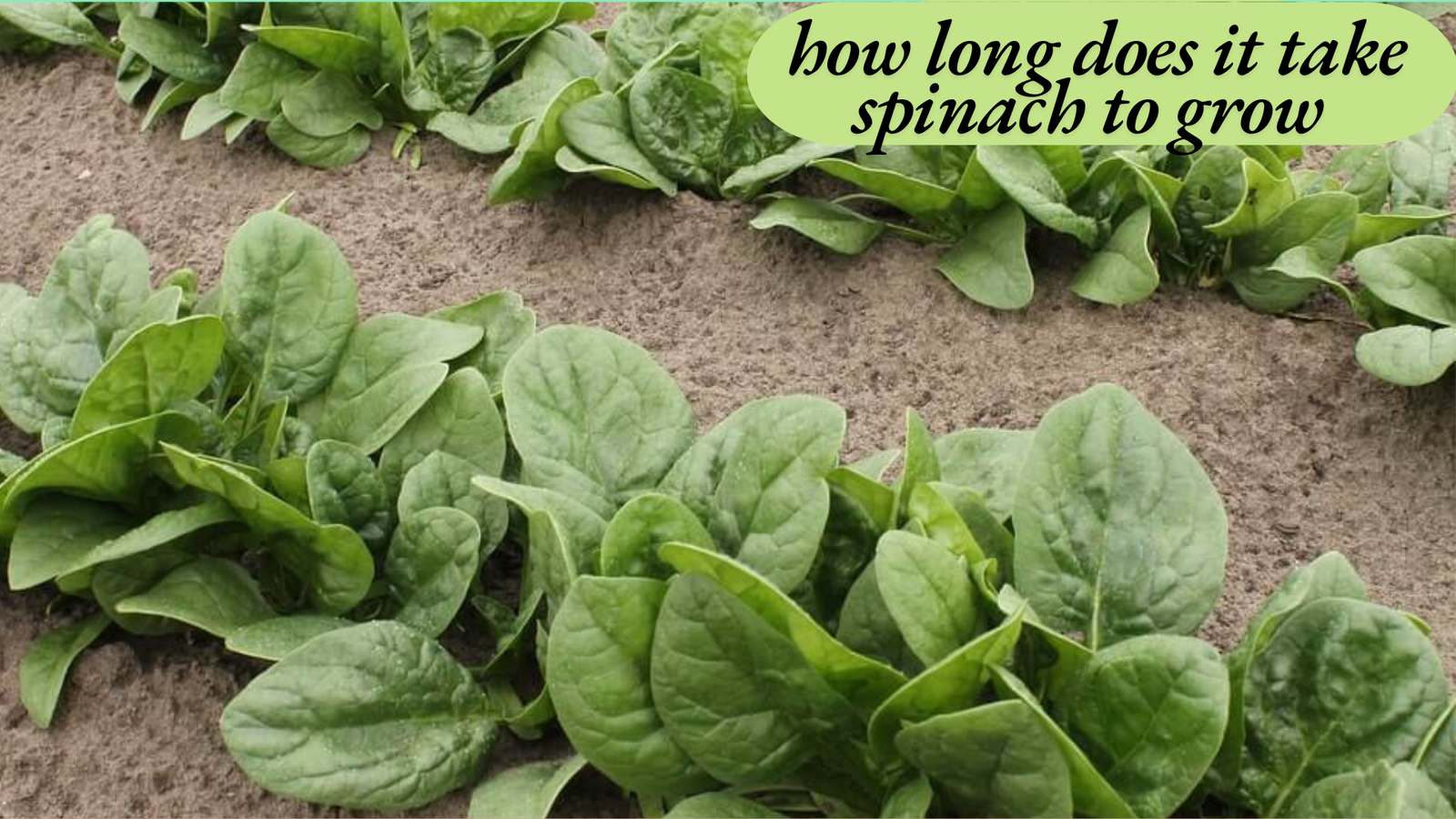
Spinach is very popular for its rapid growth. This vegetable is very useful for farmers because they can get fresh vegetables in a short time. When you plant spinach , it can take six to nine weeks to grow. The process of plant growth starts when the plants are sown, and within eight to ten days, spinach plants start to emerge; within about five to six weeks, small spinach plants start to emerge. And you can cultivate this spinach. How to grow spinach indoors is very easy method.
If you want softer and longer spinach, then you should cultivate the spinach after a maximum of six to eight weeks because at that time the spinach becomes quite mature because the leaves are very big, and this way you can eat tasty spinach grown at home.
2. Ideal growing conditions for spinach
To grow healthy, vibrant spinach, providing the right growing conditions is essential. Spinach thrives in cooler temperatures, ideally between 45°F (ca. 7 °C) and 75°F (ca. 24 °C), making it perfect for early spring or fall planting. It’s sensitive to heat, and temperatures above 80°F (ca. 27 °C) can cause the plant to bolt, turning the leaves bitter and reducing yield. When it comes to soil, spinach prefers well-drained, fertile soil enriched with organic matter.
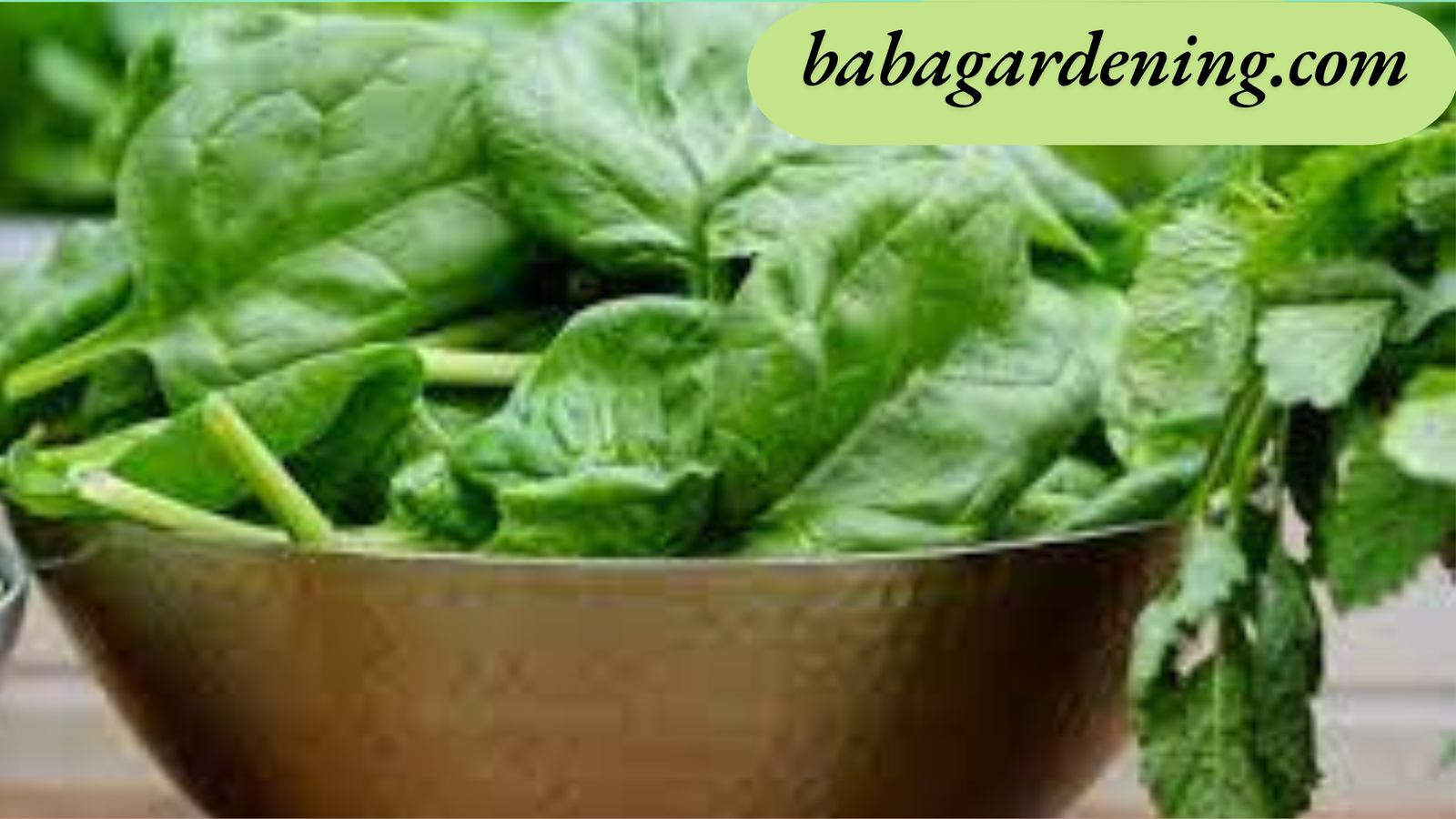
A pH level between 6.5 and 7.0 is optimal for nutrient absorption. Spinach also requires consistent moisture, as it has shallow roots that can dry out quickly; watering regularly will ensure steady growth and prevent the plant from becoming stressed. While spinach can tolerate partial shade, it flourishes best when given at least 6 hours of direct sunlight daily.
3. Choosing the spinach variety how long does it take spinach to grow
When selecting the best spinach variety for your garden, it’s important to consider your growing conditions, desired harvest time, and whether you want tender baby leaves or mature greens. There are several varieties of spinach, each with unique characteristics:
Baby Spinach: Known for its quick growth and tender leaves, baby spinach is ideal for gardeners looking to harvest early, typically in 4-6 weeks. It’s perfect for salads and smoothies, offering a delicate texture and mild flavor.
Savoy Spinach: This variety has deeply crinkled, curly leaves and is more heat-tolerant than other types. While it grows a bit slower, it is well-suited for warmer climates, although it still prefers cooler temperatures to avoid bolting.
Semi-Savoy Spinach: A hybrid variety that combines the benefits of both flat-leaf and savoy types, semi-savoy spinach has slightly curly leaves and grows faster than the fully savoyed types. It offers a balance between tenderness and durability and is a wonderful option for gardeners seeking a reliable, versatile variety.
Flat-Leaf Spinach: This variety has smooth, broad leaves, making it easier to clean and prepare. Cooking often uses it for its mild flavor and texture, and it generally grows quickly, with some varieties maturing in just 6 weeks.
4. How to Plant Spinach for Faster Growth
To encourage faster growth and a bountiful spinach harvest, proper planting techniques are essential. Start by selecting a well-drained, fertile soil enriched with compost or organic matter, ensuring that the pH level is between 6.5 and 7.0. Plant the spinach seeds about 1/2 inch deep, spacing them 2–4 inches apart in rows 12–18 inches apart. This spacing allows for proper airflow and prevents overcrowding, which can stunt growth.
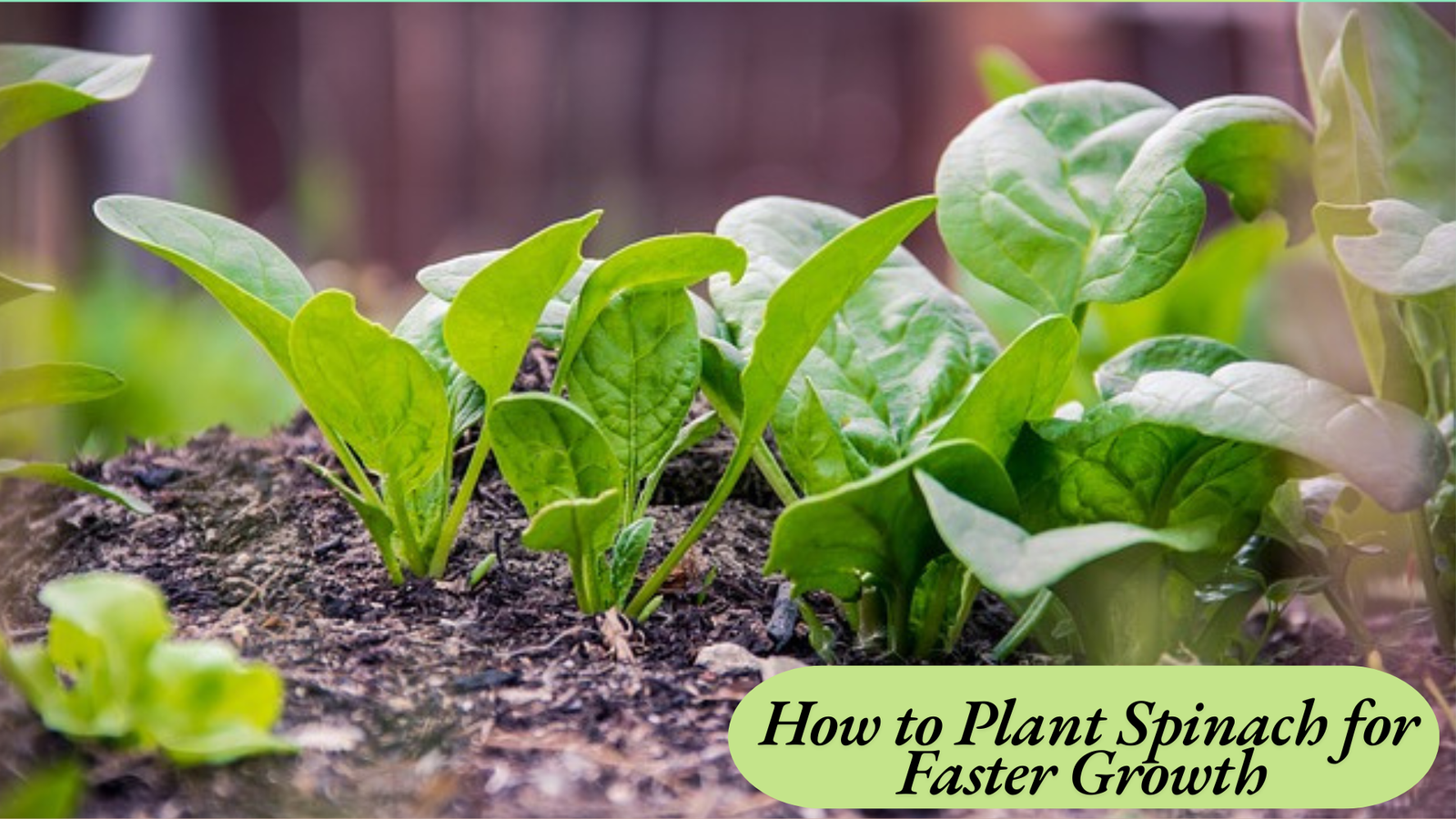
For optimal results, plant spinach in early spring or late summer when temperatures are cooler, as spinach grows best in temperatures between 45°F (ca. 7 °C) and 75°F (ca. 24 °C). Additionally, consider succession planting by sowing seeds every 2-3 weeks to ensure a continuous harvest. Regular watering is key, as spinach requires consistent moisture for healthy growth. Finally, providing at least 6 hours of direct sunlight each day will help accelerate the growth process, ensuring you have fresh, nutritious spinach in no time.
5. Common issues that can slow spinach growth
Certain conditions can slow down spinach growth, such as
Heat Stress: Spinach may bolt or turn bitter in hot weather.
Poor Soil: Lack of nutrients can result in slow growth.
Pests: Monitor for common pests such as aphids or leaf miners.
6. How to Harvest Spinach:
Harvesting spinach at the right time is key to enjoying the best flavor and texture. You can begin harvesting spinach as early as 4-6 weeks after sowing, depending on whether you’re growing baby spinach or mature leaves. For baby spinach, simply pick the outer leaves when they reach about 2–3 inches long, allowing the inner leaves to continue growing.
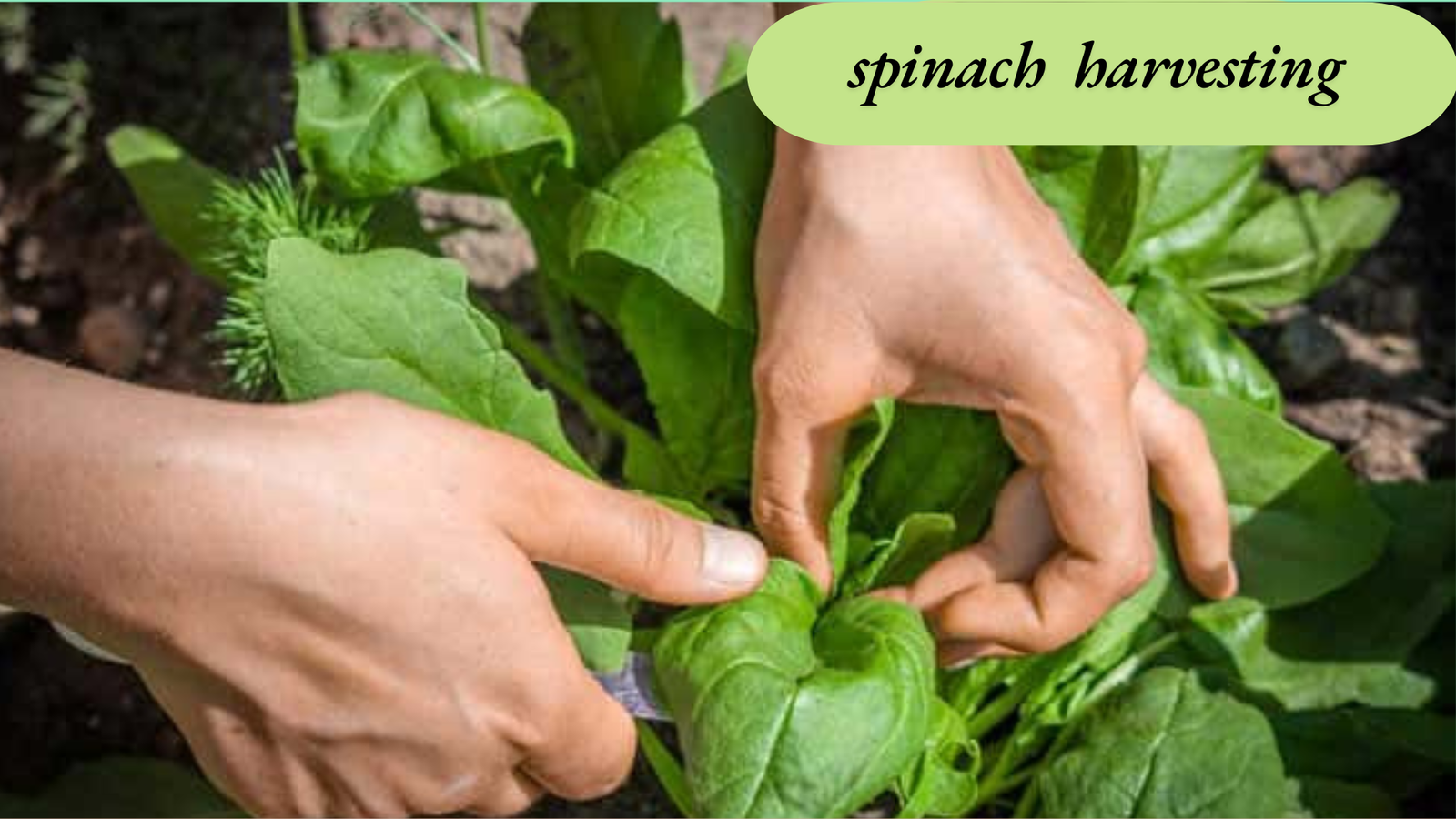
This method promotes a longer harvest period, as the plant will continue to produce new leaves. For mature spinach, wait until the leaves are fully developed—typically 6–8 weeks after planting. To harvest, use scissors or garden shears to snip the outer leaves at the base, leaving the center of the plant intact to allow for regrowth. If you prefer to harvest the entire plant, you can pull it up from the root.
7. Tips for Spinach Growing Season how long does it take spinach to grow
To enjoy fresh spinach for a longer period, there are several strategies you can use to extend its growing season. One of the most effective methods is succession planting. By sowing spinach seeds every 2-3 weeks, you can ensure a continuous supply of fresh greens as older plants are harvested and new ones mature. Additionally, spinach is a cool-season crop that thrives in spring and fall, but during the hotter summer months, it tends to bolt.
To avoid this, consider using shade cloth to protect your spinach from the heat. The shading can keep temperatures around the plants cooler, preventing premature bolting and extending their growth period. Row covers or cold frames help you grow spinach in winter by providing warmth and frost protection.
Conclusion
Spinach is a fast-growing, nutritious crop that can thrive in various garden settings. By understanding the factors that influence its growth, such as temperature, soil quality, and watering needs, you can achieve a successful harvest in as little as 6 to 8 weeks. Choosing the right spinach variety for your climate and gardening space, along with employing strategies like succession planting and shade protection, will help extend your harvest season and keep your spinach growing longer.
Whether you’re growing baby spinach for salads or larger leaves for cooking, with the right care and attention, you can enjoy fresh, vibrant spinach throughout the cooler months and even into winter. By following the tips in this guide, you’ll be well on your way to growing a bountiful spinach crop that provides you with delicious, healthy greens all season long.
FAQs
1. How long does it take for spinach to grow?
Spinach typically takes 6-8 weeks to reach full maturity, with baby spinach ready for harvest in about 4-6 weeks after planting.
2. Can I grow spinach in hot weather?
Spinach prefers cooler temperatures and tends to bolt and become bitter in hot weather. To grow spinach in warmer climates, choose heat-tolerant varieties or use shade cloth to protect the plants.
3. How do I harvest spinach for continuous growth?
For a continuous harvest, pick the outer leaves of the spinach plant while leaving the center intact. This procedure will allow the plant to keep producing new leaves throughout the season.

